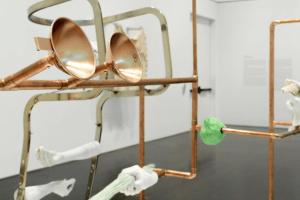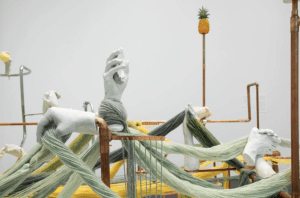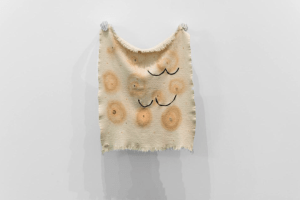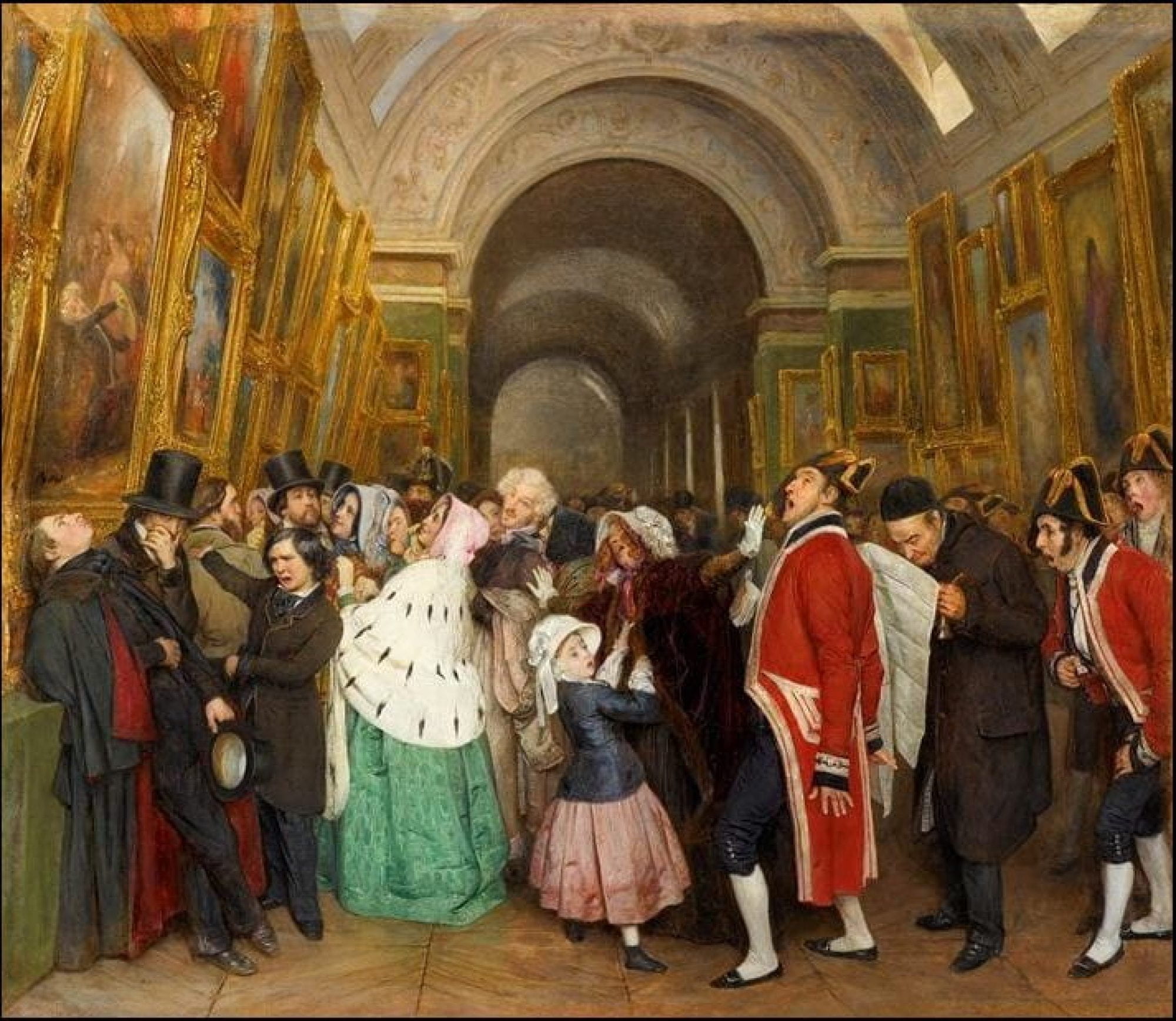Navigating Motherhood With Your Sister: Contemporary Project
How does one navigate a new experience? Some might say to lean on others and seek guidance from people who have lived through similar events. Though that might sound simple, you won’t always be guaranteed guidance for unpredictable circumstances that fluctuate from person to person. For example, how does a woman seek advice or help for a pregnancy? Not to mention- a first pregnancy? The limitless variables and incalculable outcomes that go into each individual experience can become scary and isolating, especially when it is your first time doing something. I can’t imagine a worldwide Pandemic making it feel any less dooming.
With Lisa and Janelle Iglesias living on opposing coasts during their simultaneous, first pregnancies- they relied on FaceTime to communicate with each other as they navigated through the worldwide panic going on regarding healthcare access, hospital space, paid leave and reproductive justice. Contemporary Project, an exhibition exploring the struggles many women faced during the height of the COVID-19 Pandemic, was created by two sisters known as Las Hermanas Iglesias, in response to the overwhelming uncertainty they were facing during the year 2020. Their exhibition, showcasing several multi-media artworks, is on view at the Blanton Museum of Art in Austin, Texas from December 17th, 2022 to July 9th, 2023.

A significant part of Las Hermanas Iglesias’ exhibition, Contemporary Project, includes three artworks: Plumb and Fathom (2022), Sea Change (2022), Dar a Luz (2022), and Fluff Loomed and Twin Peaked detail (2016-2022). Using a mixture of textiles, collage, and sculpture, the Iglesias sisters captured their struggles and triumphs of fertility, pregnancy, loss and birth with the hopes to bring light to how many women struggle with these issues not only during a pandemic, but during mundane times too.

Plumb and Fathom, or the sculpture’s bones, consists of thin copper pipes coming out of the white baseboard, twisting and turning in every direction. Each pipe’s final destination weaves back to the base of the structure thereby blurring the line of where the pipe’s stopping and starting point is. The pipes are mostly all connected, and in a few different spots on the sculpture, there are copper funnels that almost act as a telecom system. You are able to talk into one, and because this pipe system runs throughout the entire sculpture, the sound will come out of the other end. There are also a few brass structures that follow the same randomized, turning method throughout the sculpture, adding a new color and texture to this maze-like look. This intricate structure shows the complex systems of life and how they can be seen as networks. They allude to the personal networks we create for care, family, community, friends, and even within societies or resistance to socio political problems in society. What seems to be never ending and intertwining pipes, represents this system that can be turned in every direction, waiting for you to figure it out.

To create Sea Change, concrete casts of Lisa’s, Janelle’s, their mother’s, and their sons’ hands were intertwined with weaved, dyed threads on top of Plumb and Fathom’s copper-pipe plumbing structure to make up their sculptural piece. Exhausting every angle and symbolic opportunity, the Iglesias sisters decided to use natural dye extracted from herbs that aid in fertility to color the thread used. In terms of the art making process, Lisa and Janelle describe it to be very similar to motherhood in itself. They used the method of jerry rigging, or aggressively and quickly improvising, to manipulate the thread that droops from hand to hand, connecting these various casts that have been molded to stand still, and sculpted in different ways to bring texture and flow to the piece. This method can connect to the comment they are trying to make about motherhood and how you have to improvise fast, leaving a sometimes inconsistent or messy trail behind you, but getting the task, or in this case the thread from hand to hand, done nonetheless. This way of quickly weaving the thread from hand to hand fastly without a methodical plan contrasts nicely with the carefully carved, nurturing hands that hold the thread. Almost to suggest that though motherhood can be instantaneous and quick, there is thought, love and care behind raising children and carrying out motherly duties everyday, no matter how chaotic. This is a great visual representation of how mother’s think on their feet to meet the child’s needs at all times.

Dar a Luz, the artwork otherwise known as the neon sign reading, “DAMMIT I’M MAD,” is paired with Plumb and Fathom and Sea Change to connect this concept of a never ending puzzle of life and its systems/networks to a symbolic figure of procreation and the range of emotions that accompany it. “Dar,” is a Spanish word, and when translated into English means “to give.” In this case, to give life or birth. The bright green, neon sign is used to signify the green wave of reproductive justice happening in South America, directly linking it to the phrase, “DAMMIT I’M MAD,” the term coined by mothers experiencing a range of emotions while preparing, experiencing and recovering from the never ending curveballs motherhood throws at you. The neon sign’s phrase “DAMMIT I’M MAD,” is also a palindrome, meaning it can be read the same backward as it can be forward. The palindrome phrase was purposefully used to create a sense of versatility and open-endedness, since motherhood can look different for everyone, and that phrase can come in different seasons, and mean several different things depending on the mother. This written phrase, although simple, is a great addition to the exhibition as a whole. It doesn’t leave you guessing- it is a very clear indication of what one can feel when experiencing motherhood, which I think is a nice touch to the otherwise complex artworks on display with it.

The last part of the exhibition that I wanted to touch on is the Fluff Loomed and Twin Peaked Detail (2016-2022). The beige, fringed, burlap sheet of fabric is stained with the same natural, fertility-aiding dyes in Sea Change (2022), to make circular, breast-like shapes grouped (mostly) in pairs. The entire piece is made up of light, flesh-colored tones, with the exception of two contour outlines of the breasts in thick, black, embroidered thread. Each circular shape is complete with a light brown, embroidered dot in the center of each. But what could be the meaning behind this artwork, and how does this random textile correlate with the rest of the exhibition? Based solely on the materials used, one can infer that Las Hermanas Iglesias are trying to comment on the mother’s body and how it can become rundown over time. The found piece of fabric used is fraying at the ends, symbolizing the unraveling of the mother, whether that be her patience or the physicality of her body. The subject matter, which is breast-like shapes, are drawn to be different sizes, showing the stages a mother can go through when breast feeding a child and the state of how her breasts swell or deflate before and after feeding the child. The use of embroidery to stitch the breast’s contour and the nipples is an indication that the mother needed some sort of repairing along the way of her motherhood journey. All in all, the worn, stitched up material is very representative of a woman’s daily task of giving all of herself to the children, and being left worn down afterward. Another aspect of this artwork is the fact that it is about the same shape and size of a baby blanket. The fraying of the sides and the thin, cheapness of the material is very similar to a loved, lived-in, used blanket of a child that is drug around everywhere, being constantly weathered and worn out. The blanket-like piece of artwork, in this context, could have a double meaning, showing that the blanket is a mother, represented by the breasts on it and how it is constantly at the child’s disposal, being drug around and worn down over time- catering to its every need and providing constant comfort and companionship. This, in my opinion, is the most successful part of the exhibition because it is so versatile in its meaning.
But what does this all mean and what do they have to do with each other? We know that the sisters connected the three artworks by explaining that the neon sign (Dar a Luz) is a response to the uncertainty of life’s curveballs (Plumb and Fathom) and in light of that, sometimes improvising and embracing the journey (Sea Change) is just a part of motherhood for most. And perhaps, after it all, the mother has little to nothing left of herself or for herself (Fluff Loomed and Twin Peaked Detail). But why is this an exhibition that we should care to go see or learn about?
Mothers all around the world feel overwhelmed and lonely from time to time when navigating how to raise their children. We are taught that motherhood is a gift or calling, but what about those who also really struggle with it at the same time? What more do mothers have left after giving all of themselves to their children? Not only is their time, energy, patience and kindness poured in- but their bodies are used to carry their children, birth their children and feed their children. We all know a mother- whether we have one or we are one. We know the sacrifices our mothers make on a daily basis, and how they will make those sacrifices for the rest of their lives.
This exhibition is a direct representation on just how much a mother gives on not only a daily basis- but forever- to her children. Las Hermanas Iglesias took the universal experience of uncertainty in motherhood and turned it into an entire exhibition. Whether it’s leaning on different networks we create in our lives for guidance or support, improvising that leaves a mess behind you in order to get the job done, having the occasional outburst when overwhelmed, or being so wrung dry that you have nothing left to give yourself- mothers get to experience the wide range of emotions from time to time. And maybe that is the point: motherhood is a privilege to experience no matter the time or place. It is the ultimate sacrifice. Whether that is with the help of others or through trial and error: no matter how messy, you get through it. I can’t think of a more fit duo to create an exhibition highlighting the beauties and fears that motherhood brings- especially when trying to navigate it alone during a pandemic.
Sources/Citations:
Iglesias, Las Hermanas, director. Blanton Curated Conversations. YouTube, 27 Jan. 2023, https://youtu.be/rWHO_I5v04g. Accessed 19 Apr. 2023.
Iglesias, Las Hermanas. “The Contemporary Project.” Blanton Museum of Art, 17 Dec. 2022, https://blantonmuseum.org/rotation/lashermanasiglesias/.
“Las Hermanas Iglesias Glasstire Events.” Glasstire, 17 Dec. 2022, https://glasstire.com/events/2022/12/12/las-hermanas-iglesias/. Accessed 19 Apr. 2023.
